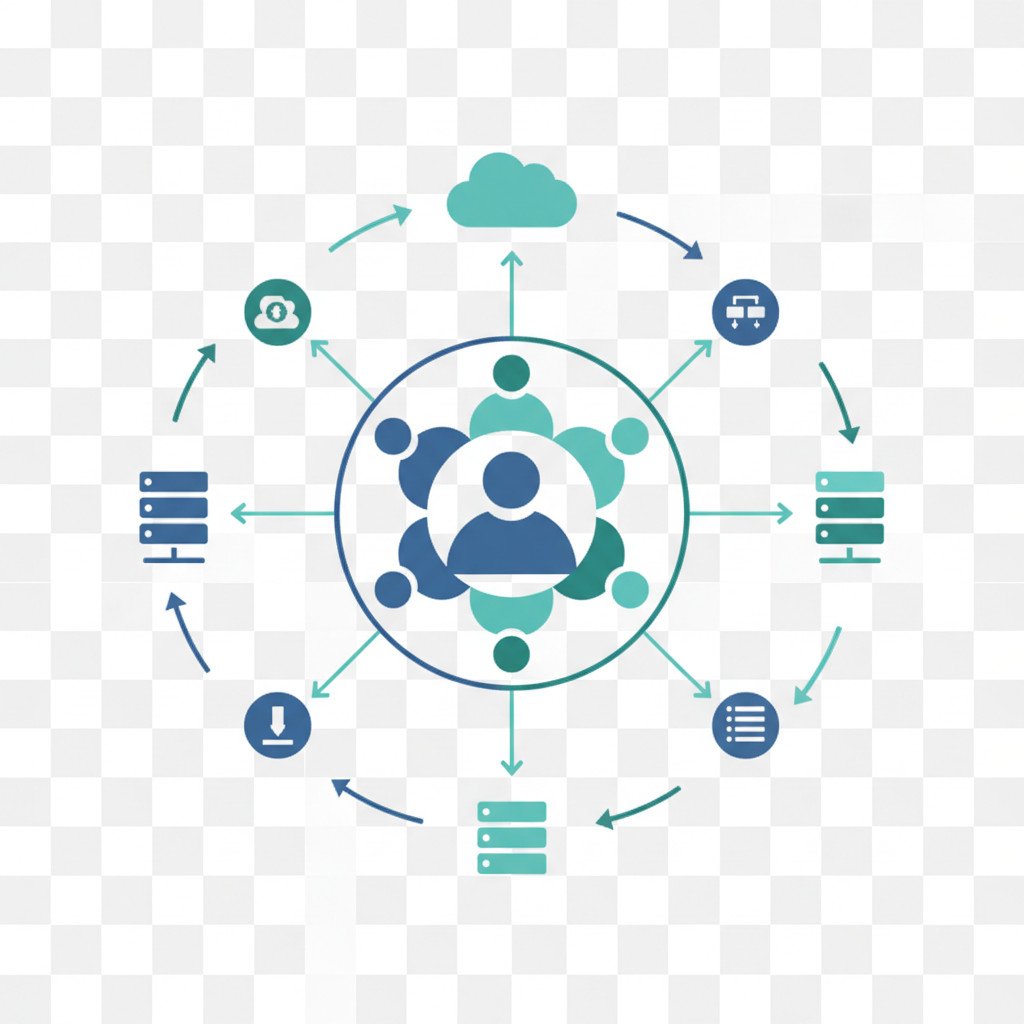Gemini Enterprise arrives as a practical way to bring AI agents to every desk, and it promises to reshape how teams work. It pairs Google’s Gemini models with a no-code workbench and prebuilt agents for instant productivity. Because it combines powerful brains like Gemini 2.5 Flash Image, an agent creation and orchestration workbench born from Agentspace, a taskforce of specialized agents, and governance features including Model Armor, the platform aims to unite data, tools, and rules into a single, secure experience that scales across departments and systems and surface insights across legacy systems and cloud data lakes easily in minutes.
For example, new connectors link Microsoft Teams, Salesforce, Box, Confluence, and Jira to agent workflows. As a result, this article will unpack Gemini Enterprise’s core components, real customer outcomes, pricing tiers, developer programs like GEAR, and practical rollout strategies so you can assess readiness and plan a measured, secure deployment.
What is Gemini Enterprise?
Gemini Enterprise is Google Cloud’s enterprise AI platform. It combines Gemini models with agent technology and orchestration tools. Because it unifies models, connectors, and governance, teams can run AI across workflows securely. The platform aims to make AI agents available at every desk. Therefore, it moves beyond single chat interfaces to end to end agentic systems.
Gemini Enterprise brings together powerful models like Gemini 2.5 Flash Image and a no code workbench born from Agentspace. It also offers a taskforce of prebuilt agents, such as Code Assist Agent and Deep Research Agent. As a result, companies can build custom agents or pick validated partner agents quickly. The platform connects to Microsoft Teams, Salesforce, Box, Confluence, and Jira through new connectors. For official product details, see the Google Cloud product page for Gemini Enterprise here. Also, read the launch announcement at the Google Cloud blog here.
Gemini Enterprise core features and benefits
Key features
- Brains: access to Gemini models, including Gemini 2.5 Flash Image, for multimodal reasoning and image understanding
- Workbench: no code agent creation and orchestration tools from Agentspace
- Taskforce: library of prebuilt Google agents for common workflows
- Connectors: deep integrations with enterprise systems and cloud storage
- Governance: Model Armor and governance controls to manage risk and permissions
- Ecosystem: open partner network and an AI agent finder for validated solutions
Benefits
- Faster outcomes because agents automate repetitive tasks and surface insights
- Secure deployments due to built in governance and enterprise controls
- Reduced vendor dependency with a large partner ecosystem and GEAR developer program
- Scalability across departments since the platform supports company wide rollouts
For practical examples and integrations, explore related write ups on agent adoption and secure memory workflows at Emp0. See how desk side agents transform work here. Also review implementation patterns in secure memory and RAG pipelines here and here.
In short, Gemini Enterprise is significant because it offers an end to end, governed, and extensible platform. Therefore, it addresses both technical and organizational needs for enterprise AI adoption.

Key benefits of Gemini Enterprise
Gemini Enterprise delivers measurable business value by turning AI into practical desktop assistance. Because it combines powerful models, prebuilt agents, and connectors, teams see faster results. As a result, companies reduce time spent on routine tasks and free employees for higher value work.
Core advantages
- Increased productivity: Automated agents handle data retrieval, reporting, and routine communications. For example, Email Ellie at Virgin Voyages boosted content production speed by 40%. Consequently, marketing output scaled without adding headcount. See Virgin Voyages case study for details.
- Faster decision making: Agents synthesize cross system data and highlight anomalies. Therefore, teams can act on inventory gaps or compliance risks in hours, not days.
- Cost reduction: By automating agency work and repetitive tasks, companies cut external vendor spend. For instance, Virgin Voyages reported a 35% reduction in agency dependency costs.
- Better developer velocity: The GEAR program and no code workbench accelerate agent creation. As a result, organisations scale custom solutions without long engineering cycles.
- Secure, governed rollouts: Model Armor and governance controls enable safe deployments. Consequently, IT teams control data access and model behavior across departments.
Business impact and real use cases
- Retail and inventory: In a campaigns demo, agents found a 25% inventory gap. Then they created a purchase order in ServiceNow and notified store teams. Therefore, the system closed the loop from insight to action.
- Financial services: Macquarie Bank rolled out Gemini Enterprise across staff. As a result, employees completed generative AI training and began using agents for customer workflows and risk monitoring. For further context, read Google’s practical examples of workplace benefits here.
- Cross functional scale: Because Gemini Enterprise connects to Microsoft Teams, Salesforce, and Jira, it embeds directly into everyday tools. Consequently, adoption faces fewer friction points and delivers faster ROI.
In short, Gemini Enterprise combines automation, governance, and an open ecosystem. Therefore, it helps companies boost efficiency, accelerate growth, and gain a sustainable competitive edge.
Gemini Enterprise versus competitors
The table below compares core features, pricing, and unique selling points. Use it to weigh Gemini Enterprise against major enterprise AI offerings.
| Feature | Gemini Enterprise | ChatGPT Enterprise (OpenAI) | Microsoft Copilot for Business | Anthropic Claude for Enterprise |
|---|---|---|---|---|
| Core model | Gemini family including Gemini 2.5 Flash Image for multimodal tasks | GPT family with strong conversational and API support | Copilot combines Microsoft models and Azure OpenAI services | Claude models focused on safety and reasoning |
| Agent and workbench | No code workbench from Agentspace plus orchestration | Primarily chat and API; partner tools for orchestration | Integrated into Microsoft 365 apps with task automation | APIs and partner tools for building agents |
| Prebuilt agents and templates | Taskforce of Google agents (Code Assist, Deep Research) | Templates via ecosystem partners | Built into apps like Word and Outlook for productivity | Enterprise templates and safety focused agents |
| Integrations and connectors | Deep connectors to Teams, Salesforce, Jira, Box, Confluence | Strong API ecosystem; third party connectors | Native in Microsoft 365 and Azure services | Integrations via partners and APIs |
| Governance and compliance | Model Armor, enterprise governance controls, policy tooling | Admin controls, SSO, data protection features | Microsoft security, compliance frameworks, tenant controls | Emphasis on safety, privacy, and policy controls |
| Pricing (starting) | Starts around $30 per seat for Enterprise tiers; Business from $21 | Custom/enterprise pricing (varies by contract) | Announced from $30 per user per month for Copilot | Custom enterprise pricing |
| Ecosystem and partner network | Open ecosystem with 100,000+ partners and GEAR developer program | Large partner ecosystem and plugin marketplace | Extensive Microsoft partner network and ISVs | Growing partner network focused on enterprise safety |
| Customization and developer enablement | GEAR program, no code workbench, developer tools | APIs, fine tuning, and developer support | Extensible via Microsoft Graph and Azure services | APIs and enterprise SDKs for customization |
| Ideal use cases | Desk side agents, workflow automation, multimodal tasks | Conversational AI, knowledge assistants, APIs | Productivity automation inside Microsoft 365 | Safety critical assistants, research and reasoning |
| Unique selling point | End to end agentic platform with deep connectors and governance | Robust conversational APIs and ecosystem | Native productivity integration with Microsoft apps | Safety first models and enterprise reasoning |
This table highlights strengths and trade-offs across platforms. Therefore, choose based on integration needs, governance, and existing vendor relationships.
Planning your Gemini Enterprise rollout
Start with a clear business case and measurable objectives. First, map the top workflows that waste time or create risk. Then, prioritise use cases that return value quickly. For example, pick sales reporting, inventory reconciliation, or customer triage. Next, form a cross functional steering group. Because adoption touches IT, security, and business teams, include representatives from each area.
Key planning tasks
- Define success metrics and timing
- Inventory data sources and systems of record
- Identify compliance and data residency constraints
- Estimate seats and licensing needs
- Choose pilot teams and champions
Deploying Gemini Enterprise step by step
Begin with a small pilot to reduce risk and learn fast. Deploy baseline governance rules before broad rollout. As a result, you avoid early misconfigurations and data exposure.
Pilot phase
- Provision Gemini Enterprise seats for a small team
- Configure Model Armor and access controls
- Use prebuilt agents from the taskforce to accelerate setup
- Measure time saved and accuracy of agent outputs
Scale phase
- Iterate on agent designs in the no code workbench
- Add connectors to systems like collaboration and CRM
- Roll out training and playbooks for power users
Integration and connectors
Connectors are central to value creation. Therefore, map integrations to business processes first. Then, sequence connectors by impact and complexity. Use out of the box connectors for common systems. Finally, build custom integrations for proprietary systems as needed.
Integration checklist
- Prioritise Teams, CRM, and ticketing platforms
- Validate data access patterns and permissions
- Test end to end workflows with sample data
- Monitor latency and error rates
Training and change management
Training must be role specific and practical. Offer short courses, hands on labs, and quick reference guides. Because culture shifts matter, empower champions to model agent use. Also, require security training so staff follow governance rules.
Training plan
- Launch bite sized courses for broad user adoption
- Provide developer workshops for GEAR participants
- Run regular office hours and feedback sessions
Ongoing operations and governance
Operate agents as production services. Therefore, create monitoring, audit logs, and retraining cycles. Review governance policies quarterly. As a result, you keep control over data and model behaviour while sustaining value.

Security and compliance features of Gemini Enterprise
Gemini Enterprise builds on Google Cloud security foundations to deliver enterprise grade protections. Because enterprises demand strong controls, Gemini Enterprise combines platform level safeguards with agent specific governance. As a result, IT teams can manage risk while enabling broad agent use.
Core security controls
- Model Armor and policy controls: Model Armor enforces allowed behaviors and filter rules for agents, limiting unsafe outputs and data leaks.
- Identity and access management: Role based access controls and SSO integration let admins define who can create, run, and view agents.
- Encryption: Data encrypts in transit and at rest using industry standard protocols and customer managed key options. See Google Cloud encryption details for reference cloud.google.com/security/encryption-at-rest.
- Audit logging and monitoring: Comprehensive logs track agent actions, connector usage, and data calls. Therefore, security teams retain visibility for compliance and incident investigations.
- Data residency and access controls: Regions and storage policies restrict where data sits. Consequently, organisations meet local data sovereignty requirements.
Compliance and certifications
Google Cloud maintains a broad compliance portfolio. Because Gemini Enterprise runs on Google Cloud, customers inherit certifications such as ISO 27001 and SOC 2. For a full list of supported standards, review Google Cloud’s compliance page cloud.google.com/security/compliance.
Operational protections and best practices
- Least privilege: Grant minimal permissions for agent tasks to reduce blast radius.
- Connector scoping: Enable only the connectors the agent requires, and monitor connector tokens and scopes.
- Data minimisation: Configure agents to request only necessary fields and mask PII before processing.
- Regular reviews: Schedule quarterly governance reviews to update policies and logging rules.
Training and cultural controls
Because successful security blends tools and people, roll out role based training. Macquarie Bank’s organisation wide training demonstrates how staff readiness supports safe adoption. Also, provide playbooks for incident response and agent audits.
In short, Gemini Enterprise combines Google Cloud security, Model Armor governance, and operational best practices. Therefore, organisations can adopt agents at scale while meeting enterprise compliance and data protection requirements.
What’s next for Gemini Enterprise
Gemini Enterprise will evolve quickly as enterprise AI matures. Over the next few years, expect continuous model upgrades, deeper integrations, and richer tooling. Because Google moves fast, the platform will likely add stronger explainability and safety features. Therefore, IT leaders should plan pilots now and adapt their roadmaps to new agent capabilities.
Key innovations to watch
- Expanded multimodal capabilities: Future Gemini models will better combine text, images, and live data. As a result, agents will handle tasks like visual inspections and document triage more reliably.
- Autonomous workflows: Agents will orchestrate multi step processes end to end. Consequently, teams will move from alerts to automated remediation and execution.
- Enhanced governance and explainability: Model Armor will gain finer policy controls and traceable reasoning. Therefore, compliance teams will get clearer audit trails and query provenance.
- Marketplace and GEAR scale up: The GEAR developer program aims to unlock a million creators. In addition, the AI agent finder and partner marketplace will expand validated solutions for industry verticals.
- Real time connectors and edge support: Expect lower latency connectors and more edge deployment options. As a result, industries with strict latency or residency needs will adopt agents faster.
- Verticalised agent templates: Healthcare, finance, retail, and manufacturing will receive industry specific agents. Thus, customers get faster time to impact with curated templates.
How this aligns with industry trends
Enterprise teams demand secure, composable AI that embeds into workflows. Gemini Enterprise fits this need by combining governance, connectors, and no code tooling. Moreover, as RAG and secure memory patterns spread, Gemini will likely integrate tighter data lineage and private retrieval. Finally, the shift to human centric AI means agents will augment roles, not replace them, and deliver measurable efficiency gains.
In short, Gemini Enterprise looks poised to push agentic AI into mainstream enterprise use. Therefore, organisations that experiment early can gain operational advantage while shaping governance best practices.
Conclusion
Gemini Enterprise combines advanced models, agent orchestration, and enterprise governance into a unified platform. It makes AI agents practical, secure, and scalable for day to day work. Because it pairs Gemini models with a no code workbench and prebuilt taskforce agents, teams can move from concept to pilot quickly. Moreover, deep connectors to collaboration and business systems reduce integration friction. As a result, organisations can automate workflows, speed decisions, and cut external spend.
In addition, strong governance tools like Model Armor and Google Cloud security controls enable safe rollouts. Therefore, compliance and security teams keep control while business users gain autonomy. Real customer outcomes, such as Virgin Voyages and Macquarie Bank, show measurable gains in productivity and cost savings.
EMP0 (Employee Number Zero, LLC) complements platforms like Gemini Enterprise. It provides AI and automation solutions, integration services, and training to accelerate adoption. Find EMP0 online at emp0.com and at the company blog at articles.emp0.com. Follow EMP0 on Twitter/X @Emp0_com. Read deeper operational posts on Medium at medium.com/@jharilela and explore workflows at n8n.io/creators/jay-emp0.
If you plan a rollout, start with focused pilots, measure impact, and scale responsibly.

